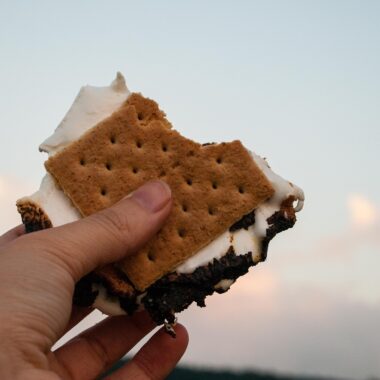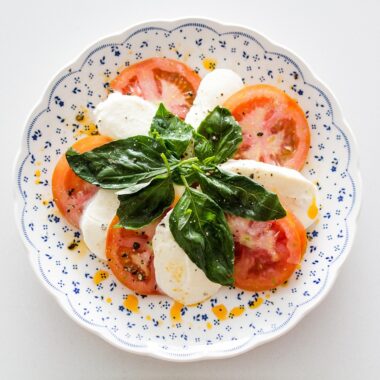Southern cuisine is steeped in history, tradition, and a rich tapestry of flavors. Among its many iconic dishes, chitterlings—or “chitlins” as they’re often called—stand out as a staple of soul food. Though it’s a dish that requires time and care, the end result is a delicious, flavorful plate that’s worth the effort. Here, we’ll walk you through the process of preparing and cooking Southern-style chitterlings, providing tips and tricks to make them shine.
What Are Chitterlings?
Chitterlings are the small intestines of a pig, and they’ve been enjoyed in various cuisines worldwide for centuries. In the American South, chitterlings hold a special place in culinary traditions, particularly in African American soul food culture. They’re often prepared for holidays, family gatherings, and special occasions, symbolizing a celebration of heritage and resilience.
While the idea of eating pig intestines might sound unusual to some, properly prepared chitterlings are tender, flavorful, and deeply satisfying.
Ingredients for Southern Chitterlings
To make authentic Southern chitterlings, you’ll need:
10 pounds of fresh or frozen chitterlings
1 large onion, chopped
2 cloves garlic, minced
1 tablespoon salt (adjust to taste)
1 tablespoon black pepper
1 teaspoon crushed red pepper flakes (optional, for heat)
1 teaspoon vinegar (to help with cleaning)
2 bay leaves
Water (enough to cover the chitterlings)
For additional seasoning, you can include:
1 teaspoon smoked paprika
1 teaspoon onion powder
1 teaspoon garlic powder
Hot sauce (to taste)
Vinegar-based pepper sauce (for serving)
Preparing the Chitterlings
The preparation process is perhaps the most important step in making chitterlings. This ensures they are clean, safe to eat, and free of any unpleasant odors. Here’s how to do it:
Thaw and Inspect
If you’re using frozen chitterlings, allow them to thaw completely in the refrigerator. Once thawed, inspect each piece for any unwanted debris or fat that needs trimming.
Clean Thoroughly
Cleaning chitterlings is a meticulous process. Rinse them under cold running water several times until the water runs clear. Use a small knife to remove any excess fat or residue. Some people choose to soak the chitterlings in a solution of water and vinegar (about 1 tablespoon of vinegar per gallon of water) to help with cleaning and odor control.
Parboil
Place the cleaned chitterlings in a large pot, cover with water, and bring to a boil. Let them boil for 5-10 minutes, then discard the water. This step helps remove impurities and reduces odors.
Final Rinse
After parboiling, give the chitterlings one last rinse to ensure they are completely clean.
Cooking the Chitterlings
Once cleaned, the chitterlings are ready to be cooked. Here’s a step-by-step guide to creating a flavorful, tender dish:
Gather Your Ingredients
Place the chitterlings in a large stockpot or Dutch oven. Add the chopped onion, minced garlic, bay leaves, salt, pepper, and any additional seasonings you prefer.
Add Water
Cover the chitterlings with enough water to submerge them completely. Bring the pot to a boil over high heat.
Simmer Low and Slow
Once the water reaches a rolling boil, reduce the heat to low and cover the pot with a lid. Let the chitterlings simmer for 3-5 hours, stirring occasionally to ensure they don’t stick to the bottom.
Taste and Adjust Seasoning
About halfway through cooking, taste the broth and adjust the seasoning as needed. Add more salt, pepper, or spices to suit your preference.
Tender and Ready
The chitterlings are done when they are tender and easy to cut with a fork. The broth will be rich and flavorful, perfect for dipping cornbread or adding a splash of vinegar-based pepper sauce.
Serving Suggestions
Chitterlings are typically served as part of a larger meal. Here are some popular pairings:
Cornbread: The slightly sweet, crumbly texture of cornbread balances the savory chitterlings.
Collard Greens: A classic Southern side dish that pairs beautifully with chitlins.
Potato Salad: Creamy and tangy, potato salad offers a refreshing contrast.
Rice or Mashed Potatoes: To soak up the flavorful broth.
Hot Sauce or Vinegar Sauce: For those who enjoy a kick of spice or tanginess.
Tips and Tricks for Success
Ventilation is Key
Cooking chitterlings can produce strong odors, so ensure your kitchen is well-ventilated. Open windows, use an exhaust fan, and light a candle to help neutralize the smell.
Use Gloves
Wear disposable gloves when handling raw chitterlings to maintain hygiene and avoid direct contact with the intestines.
Cook in Advance
Chitterlings often taste better the next day after the flavors have had time to meld. Consider cooking them a day ahead and reheating them before serving.
Quality Ingredients
Buy chitterlings from a trusted source, and always inspect the packaging for freshness. Fresh chitterlings tend to have a milder smell than frozen ones.
Cultural Significance of Chitterlings
Chitterlings are more than just a dish; they are a symbol of Southern heritage and resilience. During times of hardship, enslaved African Americans transformed what were considered undesirable cuts of meat into flavorful, nourishing meals. Over generations, chitterlings became a cherished dish that celebrates resourcefulness and culinary creativity.
Today, chitterlings are enjoyed at family gatherings, holiday meals, and special occasions, serving as a reminder of cultural roots and shared traditions.
Variations on the Recipe
While the classic Southern recipe is a favorite, there are variations you can try to suit your taste:
Fried Chitterlings
After cooking the chitterlings, bread them in seasoned flour and fry until golden and crispy for a unique twist.
Spicy Chitterlings
Add extra red pepper flakes, cayenne pepper, or hot sauce during cooking to create a spicier version.
Chitterlings Stew
Include diced potatoes, carrots, and celery in the pot to create a hearty stew.
Frequently Asked Questions
How do I store leftover chitterlings?
Store leftovers in an airtight container in the refrigerator for up to three days. Reheat gently on the stovetop or in the microwave.
Can I freeze cooked chitterlings?
Yes, cooked chitterlings can be frozen for up to three months. Thaw them in the refrigerator before reheating.
Are there alternatives to pork chitterlings?
Some people use beef or lamb intestines as a substitute, but the flavor and texture will differ. Vegetarian alternatives are also available, made from soy or seitan.
Conclusion
Southern-style chitterlings are a testament to the ingenuity and culinary artistry of Southern cooks. While preparing them requires time and effort, the reward is a dish that’s deeply flavorful and steeped in history. Whether you’re trying them for the first time or revisiting a family tradition, this recipe will guide you to creating a plate of chitterlings that captures the heart and soul of Southern cooking.
Serve them with your favorite sides, share them with loved ones, and savor the rich flavors of a true Southern classic.


















